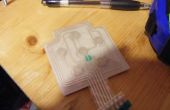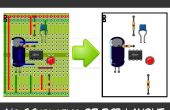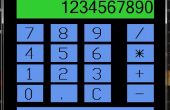Paso 6: Un ejemplo de código

Quiero para asegurarse de que el proyecto puede funcionar correctamente ahora así que voy a utilizar un ejemplo simple usando TivaWare para probarlo. El código se modifica ligeramente por ejemplo Texas Instruments Hola y se coloca debajo.
#include <stdint.h>#include <stdbool.h> #include "inc/hw_memmap.h" #include "inc/hw_types.h" #include "driverlib/gpio.h" #include "driverlib/pin_map.h" #include "driverlib/rom.h" #include "driverlib/rom_map.h" #include "driverlib/sysctl.h" #include "driverlib/uart.h" #include "utils/uartstdio.h"//***************************************************************************** // // System clock rate in Hz. // //***************************************************************************** uint32_t g_ui32SysClock;//***************************************************************************** // // The error routine that is called if the driver library encounters an error. // //***************************************************************************** #ifdef DEBUG void __error__(char *pcFilename, uint32_t ui32Line) { } #endif//***************************************************************************** // // Configure the UART and its pins. This must be called before UARTprintf(). // //***************************************************************************** void ConfigureUART(void) { // // Enable the GPIO Peripheral used by the UART. // ROM_SysCtlPeripheralEnable(SYSCTL_PERIPH_GPIOA); // // Enable UART0 // ROM_SysCtlPeripheralEnable(SYSCTL_PERIPH_UART0); // // Configure GPIO Pins for UART mode. // ROM_GPIOPinConfigure(GPIO_PA0_U0RX); ROM_GPIOPinConfigure(GPIO_PA1_U0TX); ROM_GPIOPinTypeUART(GPIO_PORTA_BASE, GPIO_PIN_0 | GPIO_PIN_1); // // Initialize the UART for console I/O. // UARTStdioConfig(0, 115200, g_ui32SysClock); }//***************************************************************************** // // Print "Hello World!" to the UART on the Intelligent UART Module. // //***************************************************************************** int main(void) { // // Run from the PLL at 120 MHz. // g_ui32SysClock = MAP_SysCtlClockFreqSet((SYSCTL_XTAL_25MHZ | SYSCTL_OSC_MAIN | SYSCTL_USE_PLL | SYSCTL_CFG_VCO_480), 120000000); // // Enable the GPIO pins for the LED D1 (PN1). // ROM_GPIOPinTypeGPIOOutput(GPIO_PORTN_BASE, GPIO_PIN_1); // // Initialize the UART. // ConfigureUART(); // // Hello! // UARTprintf("Hello, world!\n"); } En este ejemplo estamos utilizando también un archivo llamado uartstdio.h. Este es un buen momento para explicar cómo incluir un archivo externo no en la porción driverlib de la biblioteca de TivaWare.













